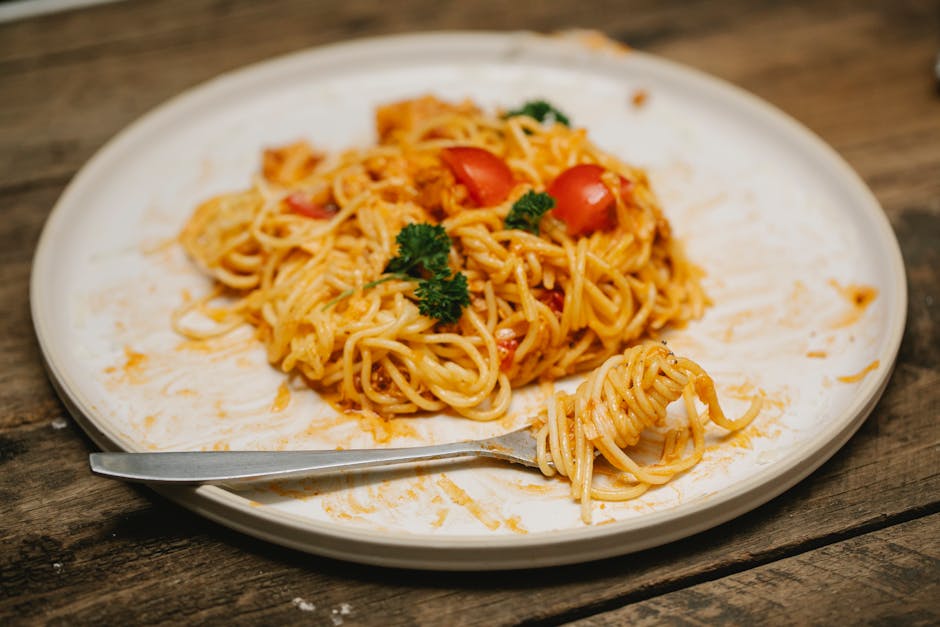Prepare yourself for the ultimate Caesar salad dressing recipe – a culinary journey that transcends a simple condiment and delves into a rich history steeped in both legend and deliciousness. The Caesar salad, far from being an ancient Roman invention as its name might suggest, is a relatively modern creation, born in the bustling heart of Tijuana, Mexico, in 1924. It’s credited to Italian-American restaurateur Caesar Cardini, who, according to legend, whipped up this now-iconic dressing during a Fourth of July celebration when he unexpectedly ran low on ingredients. This accidental masterpiece, born out of resourcefulness, quickly gained popularity, transforming from a local sensation to a global phenomenon.
The original Caesar salad, unlike its many modern iterations, was a simple affair. Cardini’s creation primarily featured romaine lettuce, croutons, Parmesan cheese, olive oil, lemon juice, egg, garlic, and Worcestershire sauce. The exact proportions remain a subject of debate and culinary experimentation, contributing to the vast array of Caesar salad recipes available today. However, the core ingredients and the unique combination of flavors have remained largely consistent, solidifying its place in culinary history. Interestingly, the addition of anchovies, now a common feature, wasn’t part of the original recipe, further highlighting the evolution of this classic dish.
The Caesar salad’s cultural significance is undeniable. It’s become a staple on restaurant menus worldwide, appearing in countless variations, from simple to extravagant. Its popularity is reflected in its ubiquitous presence in popular culture, from movies and television shows to countless cookbooks and online recipes. Estimates suggest that billions of Caesar salads are consumed annually globally, a testament to its enduring appeal. More than just a salad, it’s a symbol of American culinary ingenuity and a testament to how a simple, resourceful creation can become a globally beloved dish. This recipe aims to capture the essence of the original, providing you with the tools to create your own perfect rendition of this timeless classic.
Ingredients and Measurements
This recipe yields approximately 1 ½ cups of Caesar dressing, enough for a large salad or multiple servings. Accuracy in measurements is key to achieving the perfect balance of flavors in your Caesar dressing. We recommend using a kitchen scale for the most precise results, especially for the anchovies and garlic. However, good quality measuring spoons and cups will suffice if you don’t have a scale.
Anchovy fillets (packed in oil): 4-6 fillets (approximately 1 ounce). The anchovies are the secret weapon for that umami depth, so don’t skimp! If you’re sensitive to the strong flavor of anchovies, start with 4 fillets and add more to taste. Remember to drain the oil from the fillets before using them. Using the oil will add unnecessary fat to the dressing.
Garlic cloves: 2 large cloves (approximately 1 teaspoon minced). Fresh garlic is essential here. Use a garlic press or finely mince the cloves to ensure they’re evenly distributed throughout the dressing. Avoid using garlic powder, as it won’t provide the same fresh, vibrant flavor.
Dijon mustard: 1 tablespoon. Dijon mustard provides a subtle tang and helps emulsify the dressing, creating a creamy texture. Use a good quality Dijon mustard for the best flavor.
Lemon juice: 2 tablespoons (freshly squeezed is best). Freshly squeezed lemon juice provides brightness and acidity, balancing the richness of the other ingredients. Avoid bottled lemon juice; it often contains preservatives that can affect the taste.
Worcestershire sauce: 1 teaspoon. Worcestershire sauce adds a complex depth of flavor. Experiment with different brands to find your favorite.
Extra virgin olive oil: ½ cup. Use a good quality extra virgin olive oil for the best flavor. The quality of your olive oil will significantly impact the final taste of your dressing.
Egg yolk: 1 large. The egg yolk acts as an emulsifier, binding the oil and other ingredients together to create a creamy, smooth dressing. Ensure the egg is fresh for best results. For a vegan option, you can substitute the egg yolk with 1 tablespoon of mayonnaise or a vegan egg yolk substitute.
Parmesan cheese: ¼ cup, freshly grated. Freshly grated Parmesan cheese is crucial. Pre-grated cheese often contains cellulose which can affect the texture and flavor of your dressing.
Ground black pepper: ½ teaspoon, or to taste. Freshly ground black pepper enhances the flavor of the dressing. Adjust to your preference.
Salt: ½ teaspoon, or to taste. Start with ½ teaspoon and adjust according to your taste preferences. Taste the dressing before adding more salt.
Equipment List
Creating the perfect Caesar salad dressing requires the right tools to ensure a smooth, emulsified texture and consistent results. While you might be able to improvise with some items, having the correct equipment will significantly enhance your dressing-making experience. This list details the essential tools, along with some optional but highly recommended additions.
Essential Equipment:
- Mortar and Pestle (8-10 inch): This is crucial for creating a truly authentic Caesar dressing. The grinding action of the pestle on the garlic and anchovies releases their maximum flavor, resulting in a richer, more complex taste. A smaller mortar and pestle might prove too cramped for effective grinding.
- Whisk (8-10 inch): A sturdy whisk is necessary for incorporating the oil into the emulsion gradually. A balloon whisk with its many wires is ideal for quickly incorporating air and creating a light and airy texture. Avoid using a fork, as it won’t achieve the same level of emulsification.
- Measuring Cups and Spoons (metric and imperial): Accurate measurements are key to achieving the desired balance of flavors. Invest in a set that includes both metric (milliliters and grams) and imperial (teaspoons, tablespoons, cups) measurements for flexibility. Use a kitchen scale for the most accurate measurements, particularly for the anchovies and cheese.
- Small Bowl (approx. 1.5-2 cup capacity): A small bowl is essential for combining the ingredients before emulsification. Choose a bowl that allows for ample space for whisking without spilling.
- Airtight Container (8-12 oz): Store your freshly made Caesar dressing in an airtight container to maintain its freshness. Glass containers are preferred as they don’t impart any flavors to the dressing.
Optional but Highly Recommended Equipment:
- Food Processor (optional): While a mortar and pestle is preferred for authenticity, a food processor can be used to quickly mince the garlic and anchovies. However, be cautious not to over-process, as this can result in a pasty texture.
- Immersion Blender (optional): For a very smooth dressing, an immersion blender can be used after whisking to ensure complete emulsification. Use it briefly to avoid over-processing.
By using the recommended equipment, you will be well on your way to crafting a Caesar dressing that is not only delicious but also demonstrates a mastery of technique and attention to detail.
Preparation of Ingredients
Before you begin crafting your ultimate Caesar salad dressing, meticulous preparation of the ingredients is paramount. This ensures optimal flavor and texture in your final product. We’ll start with the anchovies, the secret weapon to a truly authentic Caesar.
Anchovies (2 ounces): Drain the anchovies from their oil and rinse them briefly under cold running water. Pat them dry with paper towels. This step removes excess salt and oil, preventing the dressing from becoming overly salty or greasy. Do not skip this step; it significantly impacts the final flavor profile.
Garlic (2 large cloves): Peel the garlic cloves. For a smoother dressing, consider using a microplane grater to finely grate the garlic. Alternatively, you can mince it finely with a sharp knife. Avoid crushing the garlic as this can lead to a bitter taste. A fine mince or grating ensures even distribution and prevents large chunks from appearing in the finished dressing.
Egg yolks (2 large): Ensure your eggs are fresh. Crack the eggs carefully into a small bowl, separating the yolks from the whites. Discard the egg whites; they are not needed for this recipe. To avoid accidentally breaking the yolks, gently crack the eggs on a flat surface to create a small crack, then separate the yolks using your fingers or a small spoon. If you’re worried about salmonella, you can use pasteurized eggs.
Worcestershire sauce (1 tablespoon): No preparation is needed for the Worcestershire sauce. Ensure you are using a high-quality brand for the best flavor.
Dijon mustard (1 teaspoon): Dijon mustard adds a pleasant tang and helps emulsify the dressing. No preparation is needed. Use a good quality Dijon; it makes a difference.
Lemon juice (2 tablespoons): Freshly squeezed lemon juice is essential for brightness and acidity. Roll the lemon on a countertop to release more juice before cutting it in half and juicing it. Strain the juice through a fine-mesh sieve to remove any seeds or pulp.
Parmesan cheese (1/2 cup, freshly grated): Freshly grated Parmesan cheese is crucial for flavor and texture. Pre-grated cheese often contains cellulose and other additives that can affect the taste and consistency of the dressing. Grate the cheese yourself using a microplane or box grater for optimal results. Reserve some grated Parmesan for topping the salad.
Olive oil (1 cup): Use a high-quality extra virgin olive oil for the best flavor. No preparation is needed. Ensure the oil is at room temperature for optimal emulsification.
Salt and freshly ground black pepper: To taste. Add salt and pepper gradually throughout the emulsification process, adjusting to your preference.
Making the Emulsion (Whisking, Blending etc.)
Creating a stable and creamy Caesar dressing relies heavily on the emulsification process – combining oil and water-based ingredients. We’ll achieve this using a combination of whisking and blending, ensuring a perfectly balanced dressing every time.
First, begin with the egg yolk. One large egg yolk is sufficient for this recipe, providing the essential lecithin which acts as an emulsifier. Place the yolk in a medium-sized bowl. Ensure the bowl is completely clean and dry; any water residue can hinder the emulsification process.
Next, gradually whisk in the Dijon mustard (1 tablespoon). The mustard acts as a secondary emulsifier, helping to bind the oil and water together more effectively and adding a delightful tang. Whisk vigorously until the yolk and mustard are fully combined and slightly thickened. This step is crucial; a well-incorporated mustard ensures a smoother emulsion.
Now, it’s time to incorporate the oil. This is where patience and technique are key. Start by adding the oil in a slow, steady stream, whisking continuously. Begin with 1/4 cup of extra virgin olive oil. The constant whisking creates friction, which helps to break down the oil into tiny droplets and incorporate it into the yolk mixture. Don’t rush this step! Adding the oil too quickly will result in a broken emulsion (separated oil and water).
Once the first 1/4 cup of oil is fully incorporated – you should notice the mixture start to thicken – you can slightly increase the rate at which you add the remaining oil (1/2 cup). Continue whisking until you have a smooth, creamy emulsion. If the mixture starts to look separated, immediately slow down your oil addition and whisk more vigorously.
For an exceptionally smooth and creamy dressing, consider using an immersion blender at this stage. Once the majority of the oil has been incorporated with the whisk, gently submerge the immersion blender into the mixture and pulse it for a few seconds. This will quickly finish the emulsification and guarantee a perfectly blended dressing. Be careful not to over-blend, as this can incorporate too much air and make the dressing less stable.
Finally, whisk in the remaining ingredients: lemon juice (2 tablespoons), minced garlic (1 clove), Worcestershire sauce (1 teaspoon), salt (1 teaspoon), and freshly ground black pepper (1/2 teaspoon). Taste and adjust seasoning as needed. Your perfectly emulsified Caesar dressing is now ready to be tossed with your crisp romaine lettuce and croutons!
Taste and Adjust Seasoning
This crucial step elevates your Caesar dressing from good to extraordinary. Tasting and adjusting the seasoning is a personalized process, so don’t hesitate to experiment based on your preferences and the specific ingredients you’ve used. We’ve provided a baseline, but your palate is the ultimate judge.
Begin by tasting a generous spoonful of the dressing. Pay close attention to the balance of flavors. Is it too salty? Too acidic? Does it need more garlic or anchovy punch? Consider the individual components: the saltiness of the anchovies and Parmesan, the sharpness of the lemon juice, and the subtle bitterness of the Worcestershire sauce. These elements should work in harmony, not compete.
If the dressing is too salty, you might need to add a tiny pinch of sugar (about 1/8 teaspoon at a time) to counteract the saltiness. Sugar doesn’t make it sweet, it balances the salt, allowing the other flavors to shine. Alternatively, if it lacks depth, a few more drops of Worcestershire sauce (starting with 1/2 teaspoon) can add complexity.
Acidity is crucial. If the dressing lacks brightness, add lemon juice, one-half teaspoon at a time, until it reaches the desired tang. Avoid adding too much lemon juice at once, as it can easily overpower the other flavors. Conversely, if it’s overly acidic, a tiny pinch of sugar or a touch more Parmesan cheese can help to mellow it.
Garlic is another key player. If you find the garlic flavor too subtle, add a small amount of minced garlic (about 1/4 of a small clove), or a few more drops of garlic-infused olive oil. Remember that garlic flavor intensifies as the dressing sits, so be cautious about adding too much initially.
Finally, consider the overall consistency. Is it too thick? Add a teaspoon of water or olive oil at a time to thin it out. Too thin? A pinch of Parmesan cheese can help thicken the dressing. Always taste and adjust incrementally, making small changes and tasting again before adding more.
Once you’ve achieved the perfect balance of flavors and consistency, your Caesar dressing is ready to be tossed with your crisp romaine lettuce and croutons. Enjoy!
Storage Instructions
Proper storage is crucial for maintaining the freshness and delicious flavor of your homemade Caesar salad dressing. Following these guidelines will ensure your dressing remains vibrant and flavorful for as long as possible.
For optimal freshness, consume your Caesar dressing within 5-7 days of preparation. While it might still be safe to consume beyond this timeframe, the quality and flavor will begin to degrade. The delicate balance of ingredients, particularly the fresh lemon juice and garlic, are most vibrant in the initial days.
Refrigeration is essential. Never leave your Caesar dressing at room temperature for extended periods, especially during warmer months. Harmful bacteria can grow rapidly at room temperature, potentially spoiling your dressing and causing foodborne illness. Always store the dressing in an airtight container in the refrigerator.
Choosing the right container is important. A glass jar or a food-grade plastic container with a tight-fitting lid is ideal. Avoid using metal containers, as they can react with the acidic ingredients in the dressing, potentially altering the taste and color. Ensure the container is thoroughly clean and dry before adding the dressing.
Quantity matters. If you’ve made a large batch of dressing (more than 2 cups, for example), consider portioning it into smaller containers. This makes it easier to grab a serving without exposing the entire batch to repeated temperature fluctuations each time you open the container. You can freeze portions for longer storage, but see the section below for freezing instructions.
Freezing your Caesar dressing is possible but may affect texture. If you wish to extend the shelf life beyond a week, you can freeze your dressing in airtight containers or freezer bags. Freeze in portions suitable for single use to avoid multiple freeze-thaw cycles, which can alter the consistency and potentially compromise the quality. Allow the dressing to thaw completely in the refrigerator before using.
Observe the dressing before use. Before using your stored Caesar dressing, always inspect it for any signs of spoilage. This includes changes in color, texture (becoming unusually watery or thick), or an off-putting odor. If you notice any of these signs, discard the dressing immediately. Your health is paramount.
By following these simple storage guidelines, you can enjoy your homemade Caesar salad dressing at its peak flavor and ensure its safety for consumption.
Recommendations for The Ultimate Caesar Salad Dressing Recipe
This Ultimate Caesar Salad Dressing is best served immediately after preparation for the freshest, most vibrant flavor. However, if you need to prepare it ahead of time, store it in an airtight container in the refrigerator for up to 5 days. The dressing may thicken slightly upon refrigeration; simply whisk it vigorously before serving to restore its creamy consistency. Avoid freezing the dressing, as this can affect its texture and taste.
For serving suggestions, this dressing is, of course, perfect for a classic Caesar salad. Toss it with crisp romaine lettuce, croutons, and freshly grated Parmesan cheese. However, don’t limit yourself! This versatile dressing can also elevate other salads, such as grilled chicken salad, shrimp salad, or even a simple green salad with cherry tomatoes and cucumbers. Consider adding grilled or roasted vegetables for extra flavor and nutrition.
To complement your Caesar salad, consider serving it alongside grilled chicken, fish, or shrimp. It also pairs well with Italian-style meats like salami or prosciutto. For a complete meal, a side of crusty bread is always a welcome addition. Remember to adjust the amount of dressing based on your personal preference and the quantity of salad. Start with a smaller amount and add more as needed.
Nutritional Information (per 2 tablespoons): (Note: This is an estimate and may vary based on specific ingredients used.) Calories: Approximately 150-200; Fat: 15-20g; Saturated Fat: 4-6g; Cholesterol: 10-15mg; Sodium: 150-250mg; Carbohydrates: 2-4g; Protein: 1-2g. It’s important to note that these are approximate values and can vary depending on the specific ingredients used and their quantities. For precise nutritional information, use a nutrition calculator with your exact ingredients and measurements.
Enjoy your delicious and versatile Ultimate Caesar Salad Dressing!





